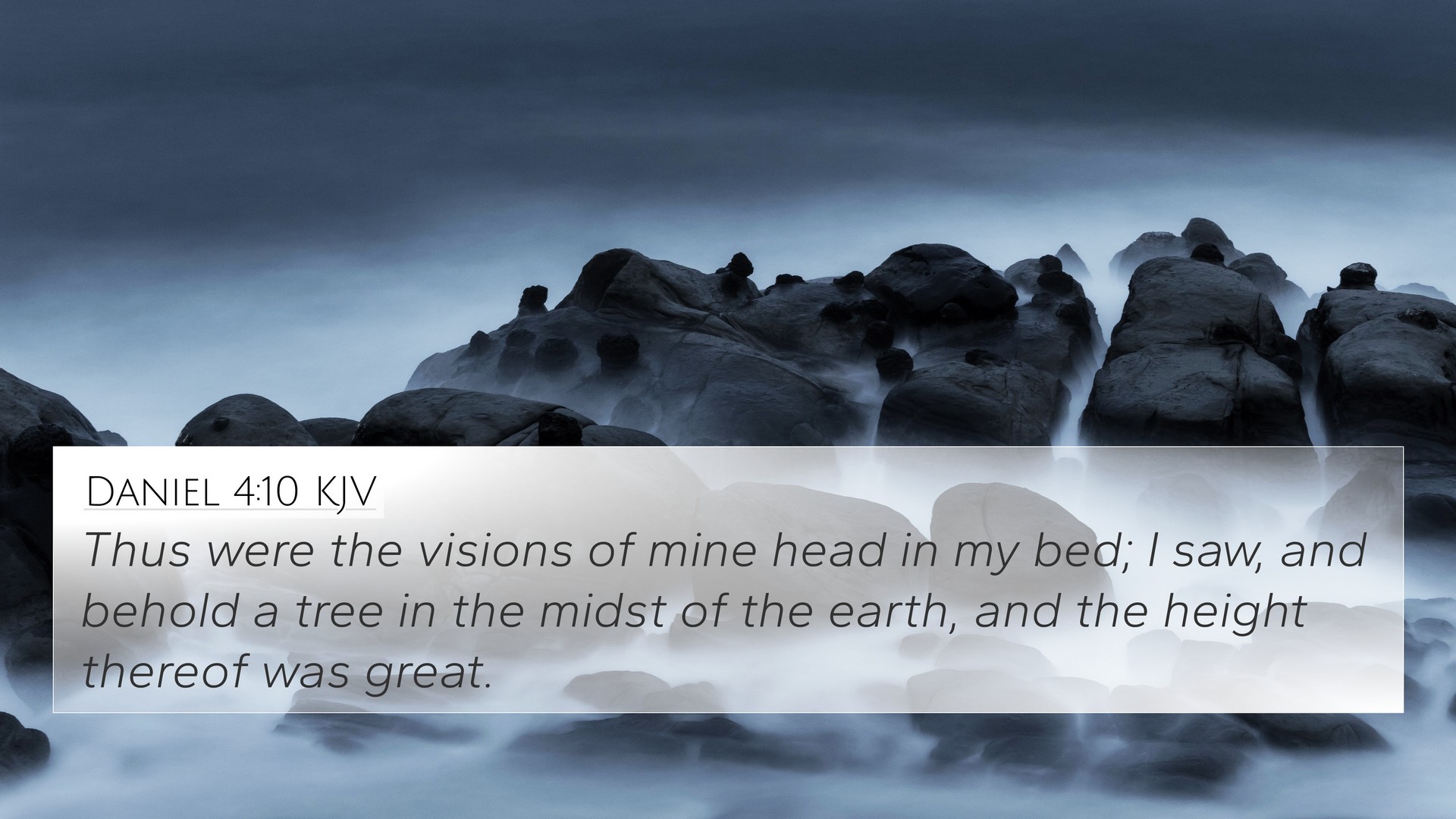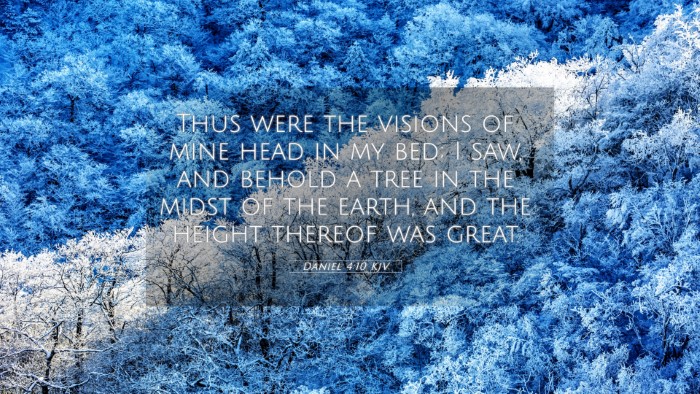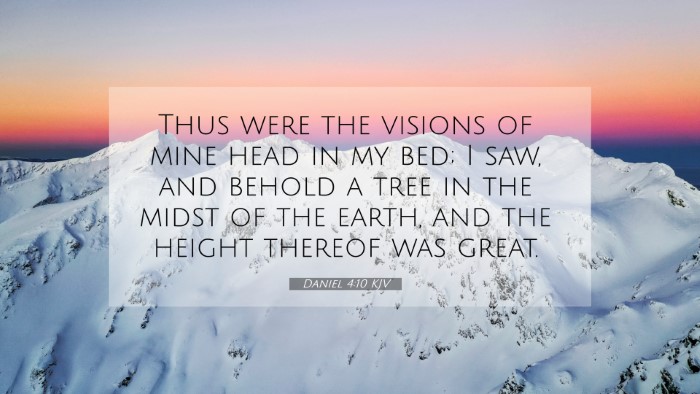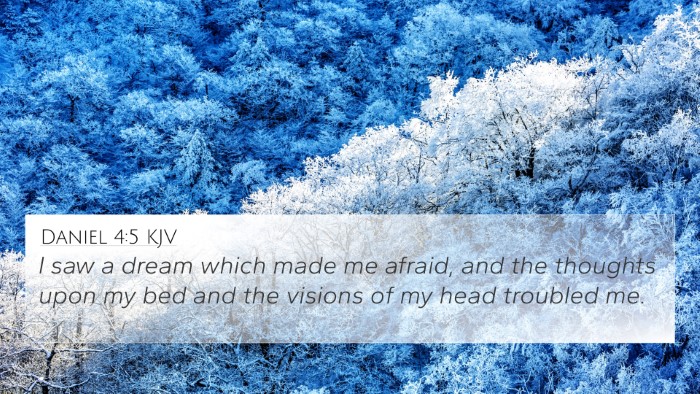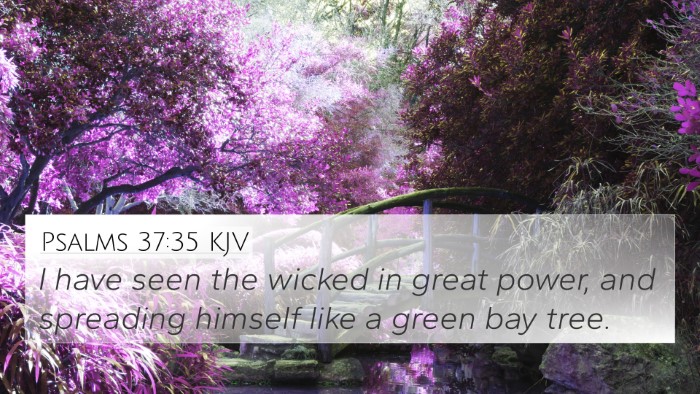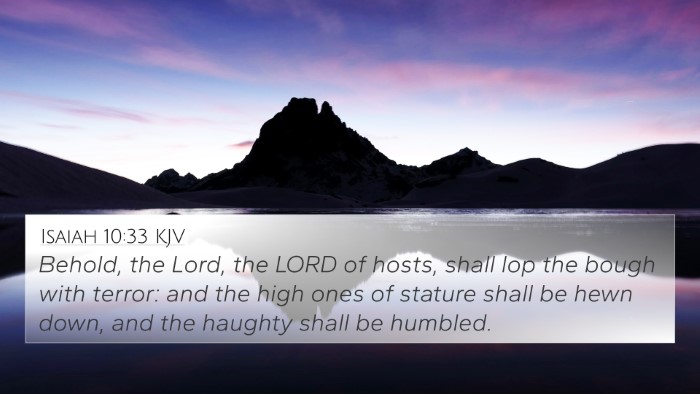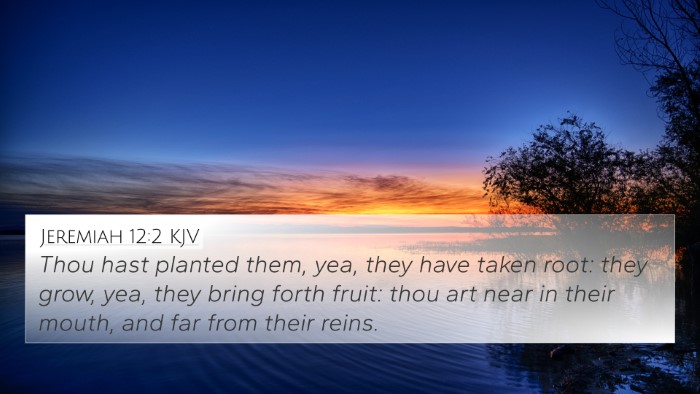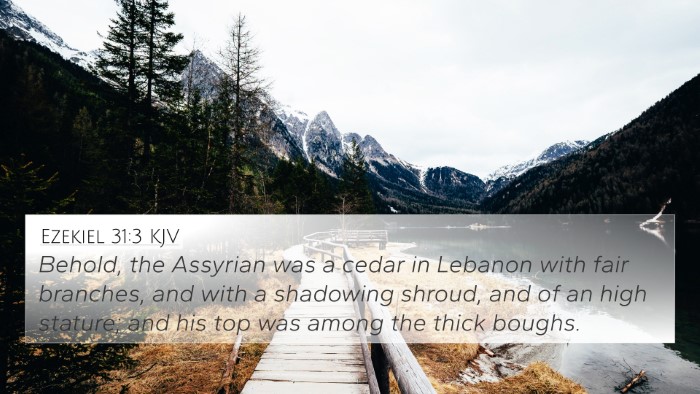Understanding Daniel 4:10
Verse Reference: Daniel 4:10
In Daniel 4:10, the prophet Daniel recounts a dream experienced by King Nebuchadnezzar, which reveals vital truths about the king’s impending judgment and the sovereignty of God over earthly kingdoms. The verse states:
"Thus were the visions of mine head in my bed; I saw, and behold a tree in the midst of the earth, and the height thereof was great."
Summary of Interpretations
This passage has been interpreted by various scholars, providing deep insights into its meaning:
- Matthew Henry: In his commentary, Henry emphasizes the majestic symbolism of the tree, which represents the king himself as a figure of pride and human glory, growing in power yet destined for destruction due to failure to acknowledge God’s supremacy.
- Albert Barnes: Barnes illustrates the vivid imagery of the tree and its significance. He interprets it as a representation of Nebuchadnezzar's kingdom, which appeared splendid to the world, yet its root cause of stumbling remains pride and arrogance before God.
- Adam Clarke: Clarke focuses on the vision's importance and its implication for Israel. He notes that while Nebuchadnezzar is lifted up, his downfall serves as a reminder to nations and individuals about the balance of power and humility before God.
Theological Themes
The analysis of Daniel 4:10 opens a dialogue on several theological themes:
- God’s Sovereignty: The tree epitomizes both the authority and fragility of human reigns, suggesting that every earthly power ultimately submits to divine authority.
- Judgment and Restoration: The vision foreshadows the judgment upon Nebuchadnezzar but also expresses God's mercy and the opportunity for restoration if the king humbles himself.
- Human Pride: The towering tree symbolizes human pride and ambition that, if not checked, leads to spiritual blindness and eventual downfall.
Cross-References to Daniel 4:10
Here are some Bible verses that relate to Daniel 4:10:
- Proverbs 16:18: “Pride goes before destruction, and a haughty spirit before a fall.”
- Isaiah 2:12: “For the day of the Lord of hosts shall be upon everyone that is proud and lofty.”
- James 4:6: “God resists the proud but gives grace to the humble.”
- Matthew 23:12: “And whoever exalts himself will be humbled, and he who humbles himself will be exalted.”
- Psalm 37:2: “For they shall soon be cut down like the grass, and wither as the green herb.”
- Jeremiah 49:16: “Your fierceness has deceived you, the pride of your heart, O you who dwell in the clefts of the rock.”
- 1 Peter 5:6: “Humble yourselves, therefore, under the mighty hand of God, so that at the proper time he may exalt you.”
Thematic Connections
This verse provides a significant reference point for drawing connections between Bible verses. The imagery of the tree has parallel themes in scripture concerning:
- Growth: The development from seed to tree reflects the growth of kingdoms, as seen in Matthew 13:31-32 where the kingdom of heaven is likened to a mustard seed.
- Divine Warning: Ezekiel 31 discusses the fate of Assyria under similar metaphors, warning of divine judgment against pride.
- Contrast of Human Power vs Divine Authority: Revelation 17:14 speaks to the ultimate fate of earthly rulers in contrast to God’s eternal reign.
Implications for Study
The analysis of Daniel 4:10 underscores the importance of Bible cross-reference guides, illustrating a few tools:
- Bible concordance: Essential for locating related scriptures and understanding themes.
- Cross-reference Bible study: Encourages an interactive approach to discovering connections that deepen comprehension of Biblical narratives.
- Inter-Biblical dialogue: Enhances the reader's understanding of how Old and New Testament texts reflect and inform each other.
Conclusion
In studying Daniel 4:10, one uncovers rich meanings about human pride, divine sovereignty, and the prophetic warnings rendered through visions. By employing tools for Bible cross-referencing, readers can enhance their understanding of this profound verse within a broader scriptural context.
